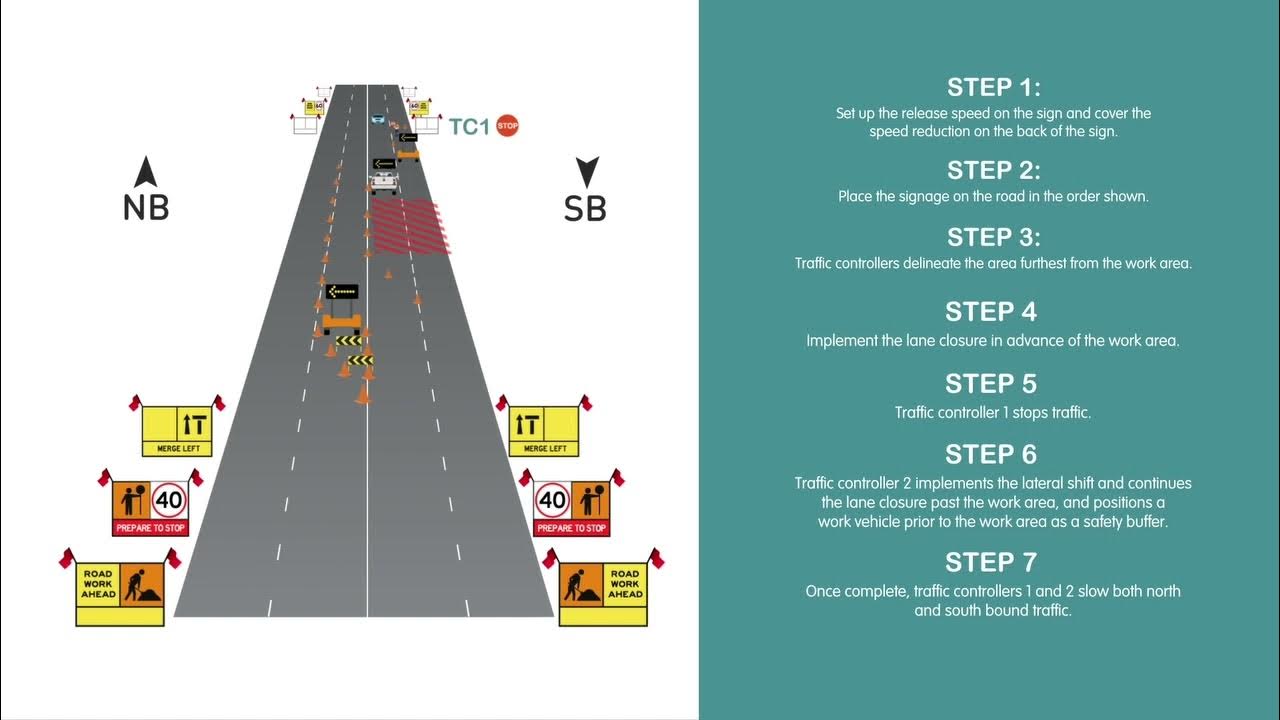Karakteristik Arus Lalu Lintas Makro : Grafik Greenshield (1)
Summary
TLDRThe video discusses macro-level traffic flow parameters, focusing on the relationship between traffic flow, speed, and density. Using Greenshield's graph, the presenter explains how traffic conditions evolve from low density (with high speed) to critical density, leading to congestion and reduced flow. The video covers the concepts of critical and maximum density, stable and unstable traffic flow, and how these factors are measured through traffic surveys. The session aims to enhance understanding of traffic performance analysis and is part of a series, with the next video featuring case studies.
Takeaways
- 📊 The discussion focuses on analyzing traffic flow parameters from a macro perspective.
- 🚦 The analysis uses the Greenshield's model to explain the relationship between traffic flow, speed, and density.
- 🚗 The traffic flow is determined by counting the number of vehicles passing a specific point, which is done through a survey method called traffic counting.
- 📈 The first graph shows the relationship between traffic flow (on the y-axis) and density (on the x-axis).
- 🚥 As traffic flow increases, density also increases until it reaches a critical point called Q-max, indicating maximum capacity and the onset of congestion.
- 🔻 Beyond Q-max, the flow decreases as congestion worsens, leading to an unstable flow and eventually stopping the traffic entirely.
- ⚡ The second graph shows the relationship between speed (on the y-axis) and density (on the x-axis), where higher density results in lower speeds.
- ⛔ At maximum density, the speed drops to zero, indicating a complete stop in traffic due to severe congestion.
- 🛣️ The third graph explores the relationship between speed and traffic flow, showing that as flow increases, speed decreases until congestion sets in, causing the flow to drop.
- 📉 The presentation concludes with a detailed explanation of how these graphs are interconnected, emphasizing the critical points where traffic flow becomes unstable.
Q & A
What is the main topic discussed in the video?
-The video discusses macro-level traffic flow parameters, focusing on the performance and quality of traffic analyzed using Greenshield's model, which includes parameters like flow, speed, and density.
How is traffic flow typically measured according to the video?
-Traffic flow is typically measured through a traffic counting survey, where a surveyor counts the number of vehicles passing a specific point on the road.
What does the graph's x-axis represent in the first graph discussed in the video?
-In the first graph, the x-axis represents traffic density, measured in SMP (Standard Passenger Car Unit) per square kilometer.
What does the term 'q-max' or 'maximum flow' signify in the context of traffic analysis?
-The term 'q-max' or 'maximum flow' signifies the point at which the flow of vehicles on the road approaches the road's capacity, indicating the maximum number of vehicles that can pass through before congestion begins.
What is meant by 'critical density' in traffic flow analysis?
-Critical density refers to the point where traffic density reaches a level that begins to cause congestion, leading to a decrease in traffic flow and the onset of unstable traffic conditions.
Why does traffic flow decrease after reaching the critical density point?
-Traffic flow decreases after reaching the critical density point because congestion begins, causing vehicles to slow down, which reduces the overall flow of traffic on the road.
What happens when traffic density reaches its maximum value?
-When traffic density reaches its maximum value, traffic flow stops completely, leading to a state of gridlock where no vehicles can move, and the flow rate is zero.
How is speed related to traffic density in the second graph?
-In the second graph, speed decreases as traffic density increases. At low density, vehicles can travel at high speeds, but as density increases, speeds decrease to maintain safety and match the flow of traffic.
What is 'critical speed,' and how is it depicted in the video?
-Critical speed is the speed at which traffic begins to become unstable due to increasing density. It is the point where speed starts to decrease sharply as congestion begins to form.
How do the graphs in the video help in understanding traffic flow and congestion?
-The graphs in the video help illustrate the relationship between flow, speed, and density, showing how traffic behaves under different conditions and providing insights into when and why congestion occurs.
Outlines

This section is available to paid users only. Please upgrade to access this part.
Upgrade NowMindmap

This section is available to paid users only. Please upgrade to access this part.
Upgrade NowKeywords

This section is available to paid users only. Please upgrade to access this part.
Upgrade NowHighlights

This section is available to paid users only. Please upgrade to access this part.
Upgrade NowTranscripts

This section is available to paid users only. Please upgrade to access this part.
Upgrade NowBrowse More Related Video

[Perencanaan Geometrik Jalan]: Parameter Perencanaan Jalan

Intelligent Traffic Management System using Machine Learning | Machine Learning Projects 2023 2024

How to Setup a Worksite in Live Traffic

JENIS JENIS ALIRAN FLUIDA ALIRAN LAMINER, ALIRAN TURBULEN, DAN ALIRAN TRANSISI

Perencanaan perkerasan bandara

How liquids flow: laminar, transitional and turbulent flow (simple tutorial)
5.0 / 5 (0 votes)